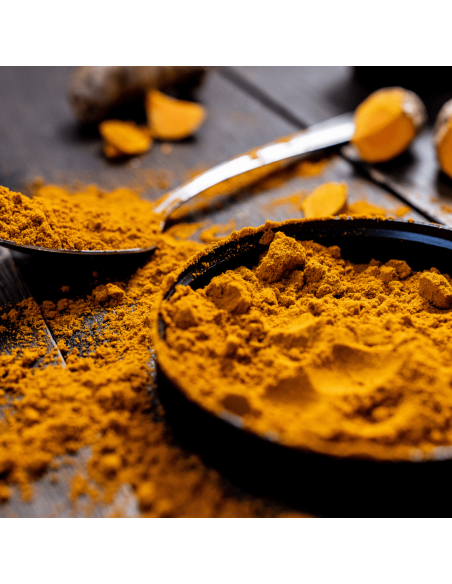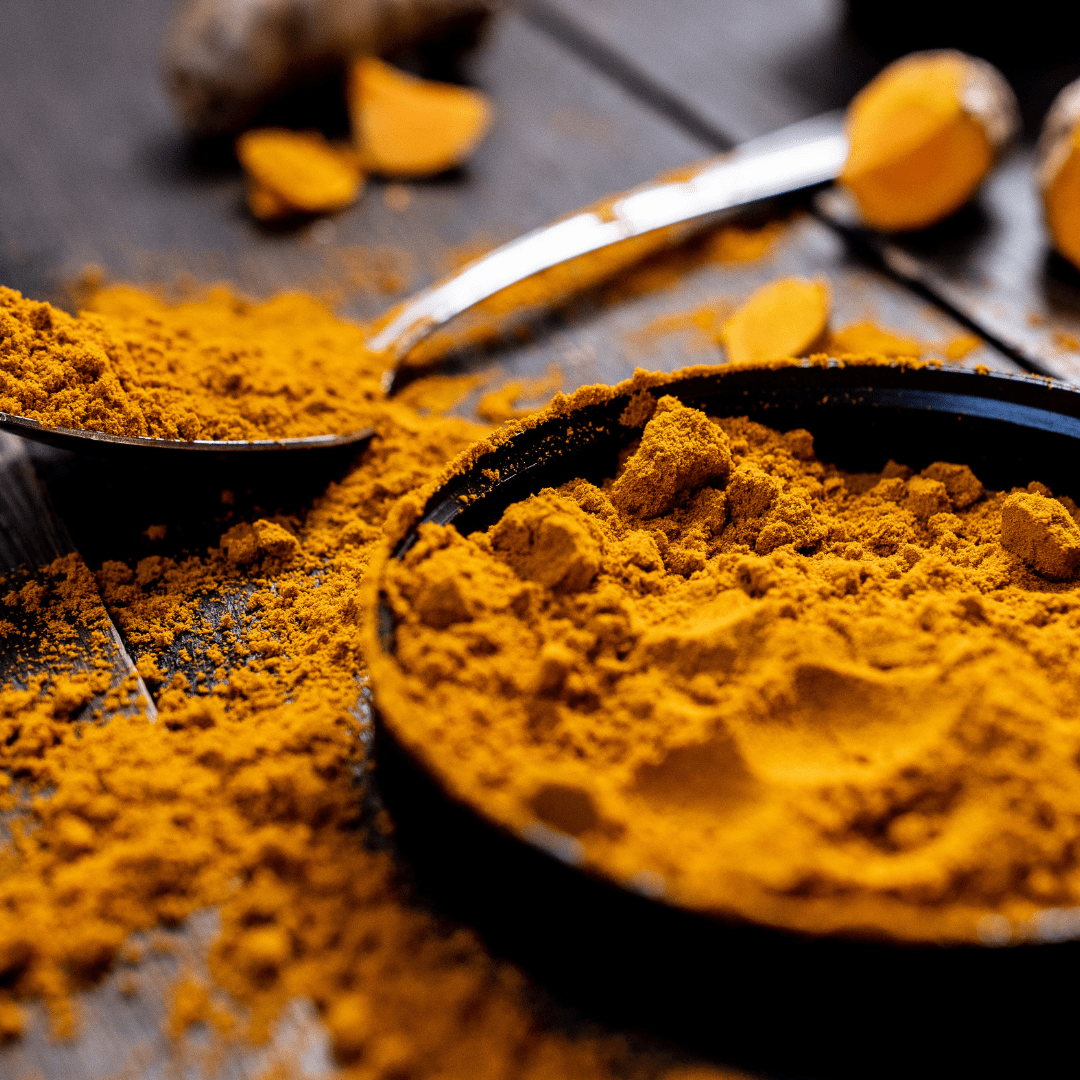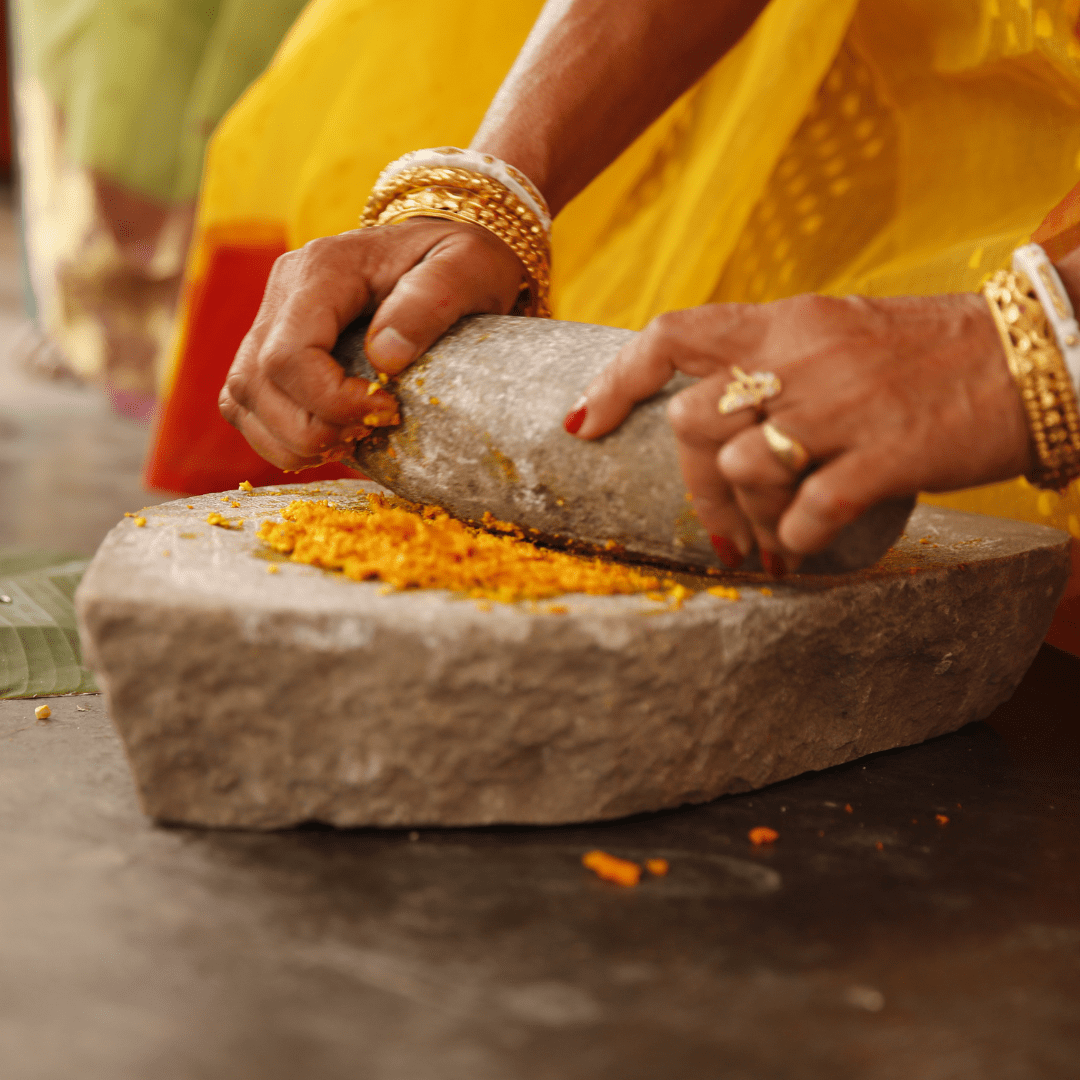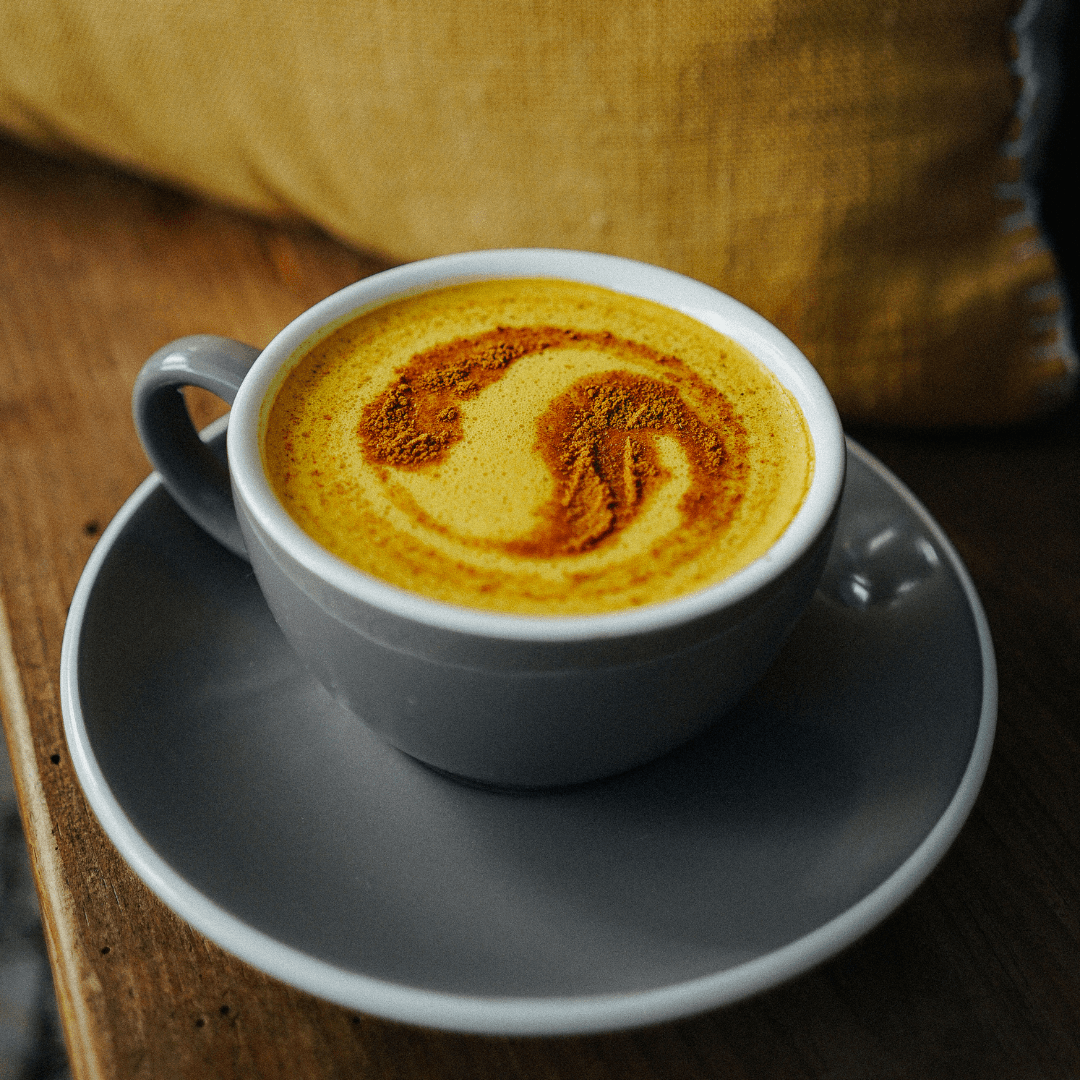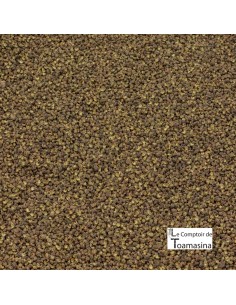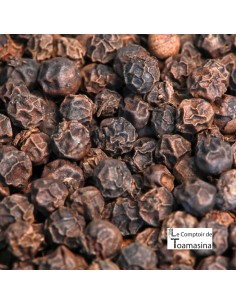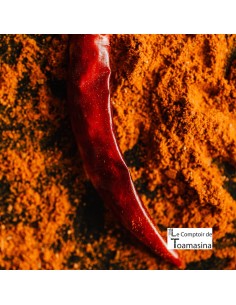Turmeric is a versatile spice that can be added to all savory preparations to give a unique flavor and color.
- But in what form should you use turmeric in your cooking?
Turmeric, a versatile culinary ingredient: use the powder or the root?"
Turmeric is often used in powdered form in cooking because it is the most convenient and quickest form . But it can also be used in root form. If you hesitate between the two options, it is advisable to opt for turmeric powder, as it is the most convenient and the easiest to find. At the Comptoir de Toamasina you will buy the most beautiful turmeric powder.
Although turmeric roots have a longer shelf life than powder, especially if the powder is not put in a resealable bottle or doypack. It is important to keep them away from light and humidity to guarantee their freshness and quality. Turmeric powder can also be stored adequately if stored well. We explain it at the end of this sheet.
It is also important to note that the turmeric root is made up of two distinct parts: the turmeric node or mother turmeric, located in the center of the rhizome, and the "fingers" that branch off from this central root. Each of these parts has unique properties and flavors, so it is important to know them to use them effectively in your cooking.
- How much turmeric to use in a recipe, a salad or even a vinaigrette?
Turmeric has a subtle but very characteristic flavor, you should not dose too much for the result to be perfect. A unique flavor boost can be added to your dishes with one teaspoon per person of powdered or freshly ground turmeric.
However, the best advice we can give you is to taste your preparation and add a little turmeric if necessary. Add turmeric to your recipe, taste and depending on your preference, add more or less, just like any other seasoning. Cooking is a creative experience, so feel free to explore and play with flavors to find what works best for you.
- Where and how to use turmeric in the kitchen?
In general, adding turmeric can improve the flavor and color of any savory preparation. This spice goes perfectly with simmered dishes because the spice supports cooking and can be used at the beginning, in the middle or at the end of the preparation.
Turmeric adds a splash of color to many dishes, such as mayonnaises, mustards, scrambled eggs, cream sauces, cheeses au gratin, rice, potatoes, lentils and even pasta. It can also enhance the flavor of these foods. Your imagination is the limit.
Turmeric, a spice with a subtle, delicate fragrance, is a great addition to your salads or dressings. It is often called "the saffron of the poor" because of its similar culinary qualities at a more affordable cost than saffron from Iran for example, the famous saffron pistil. We wrote an article on how to buy quality saffron . This spice pairs perfectly with ingredients such as basil , cauliflower, potatoes, lentils, beans, poultry, white fish, mussels and tomato-based sauces.
Additionally, turmeric is a key ingredient in many cuisines around the world, bringing a splash of flavor and color to your dishes.
Turmeric is an essential ingredient in Indian cuisine, Reunion and Bahia cuisine for example. When you use it you can practically travel to all continents with it. This spice will flavor and color many traditional dishes, such as Aloo Gobi, Chapati, Dhal, Samoussas, Tandoori chicken, Bebinca, Tikka Masala, Raïta, naans, Biryani chicken, curries, lassi, pickles, pickles, batata vada, thoran, bojé, linguiça, chutneys, and much more. It is also a central component of Indian spice blends, such as Madras curry , tandoori masala , vadouvan, and other traditional blends.
Additionally, turmeric is a key ingredient in Eastern cuisines, where it is often used to flavor white meats such as turkey or chicken, but also vegetables and mushrooms. In Morocco, in addition to the preparation of spices for couscous and ras el hanout , the typical spice mixture of the Maghreb, it is widely used to flavor potatoes and onions.
Turmeric is present in many cuisines, including Creole cuisine. It is used in spices for colombo in the West Indies and the massalé mixture on the island of Reunion to bind sauces and soften the acidity of dishes. It must be said that this spice will go around the world and that its simple culture will allow it to become a queen spice.
In Indonesia, it is a key ingredient in Rendang and Nasi Kuning, a festive rice dish with spices, including turmeric, lemongrass, cinnamon, cloves , chili, coriander , pandanus and salam leaves and galangal rhizome. It is also found in satay spice blends for sauces and marinades and kebabs.
In Malaysia, it is used in many dishes, such as ayam bakar, gulai, ayam goreng, soto, soto ayam, ikan bakar, tumpeng and nasi kuning.
Turmeric has a mild, warm flavor and can be used in almost any dish, including desserts. It can even be added to pancake or waffle batters with just half a teaspoon. A mixture called turmeric can also be prepared by mixing turmeric and cumin . Here, with pancake batter, we love it to give it a bright color. Discover our article how to make cumin powder and roast it .
Turmeric root can also be added to teas and infusions , and its powder can be added to smoothies and wellness drinks made from fruits, herbs or milk, such as Ayurveda's famous golden milk. You will discover more recipes on our youtube channel.
In summary, for 2 people, add a teaspoon of turmeric to your dishes for an extra kick of flavor and an incredible yellow color. Just be careful when handling this strong color spice as it can stain your clothes.
In Brazil , we like to mix it with cumin to add it to dishes.
Do not hesitate to discover our special Brazilian cuisine page .
To tell you more about it in India, we will put a few pieces in a black tea, see infusion.
Did you know that there is a golden-milk drink? Find out more on our vanilla and spices blog .

